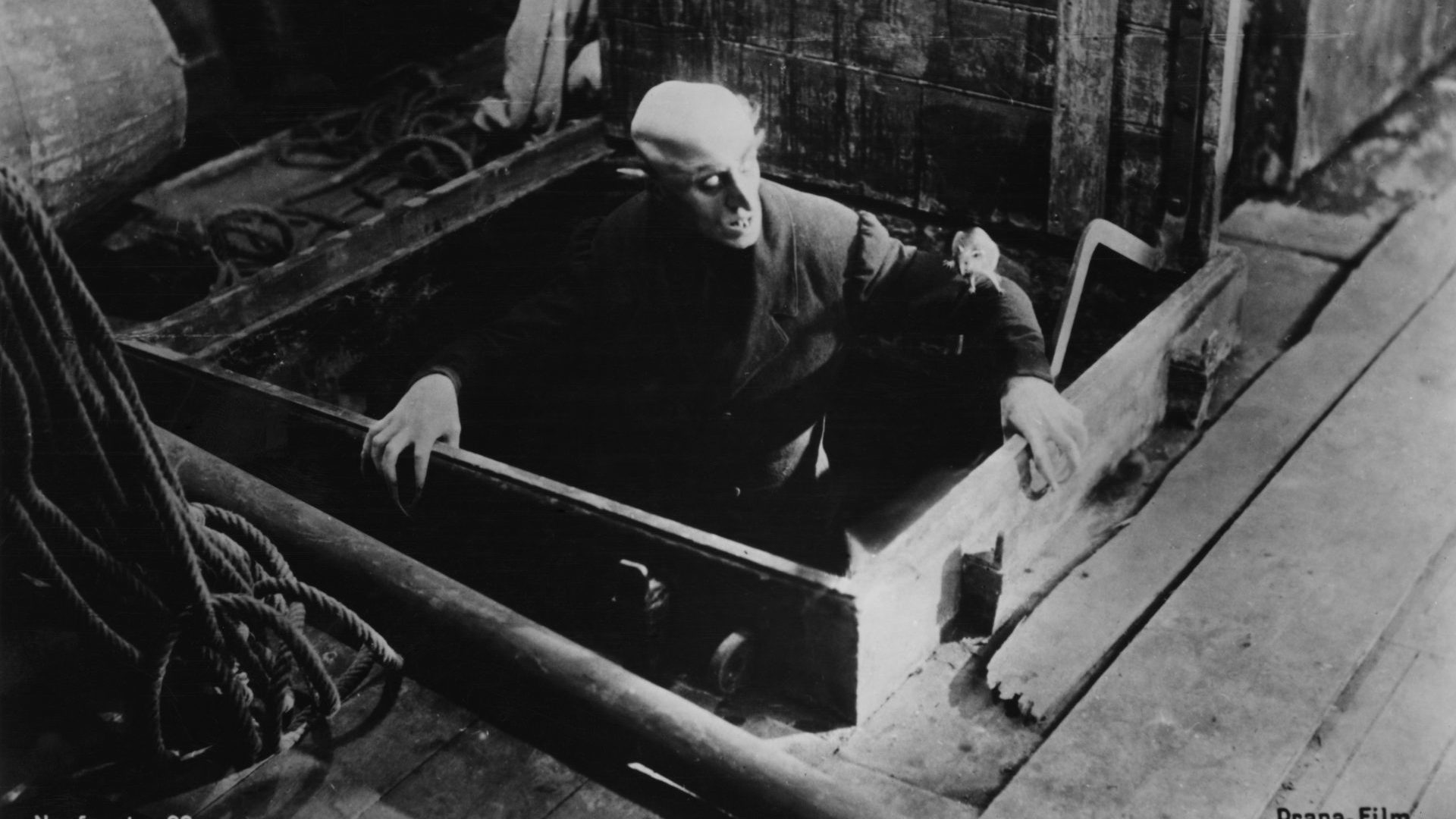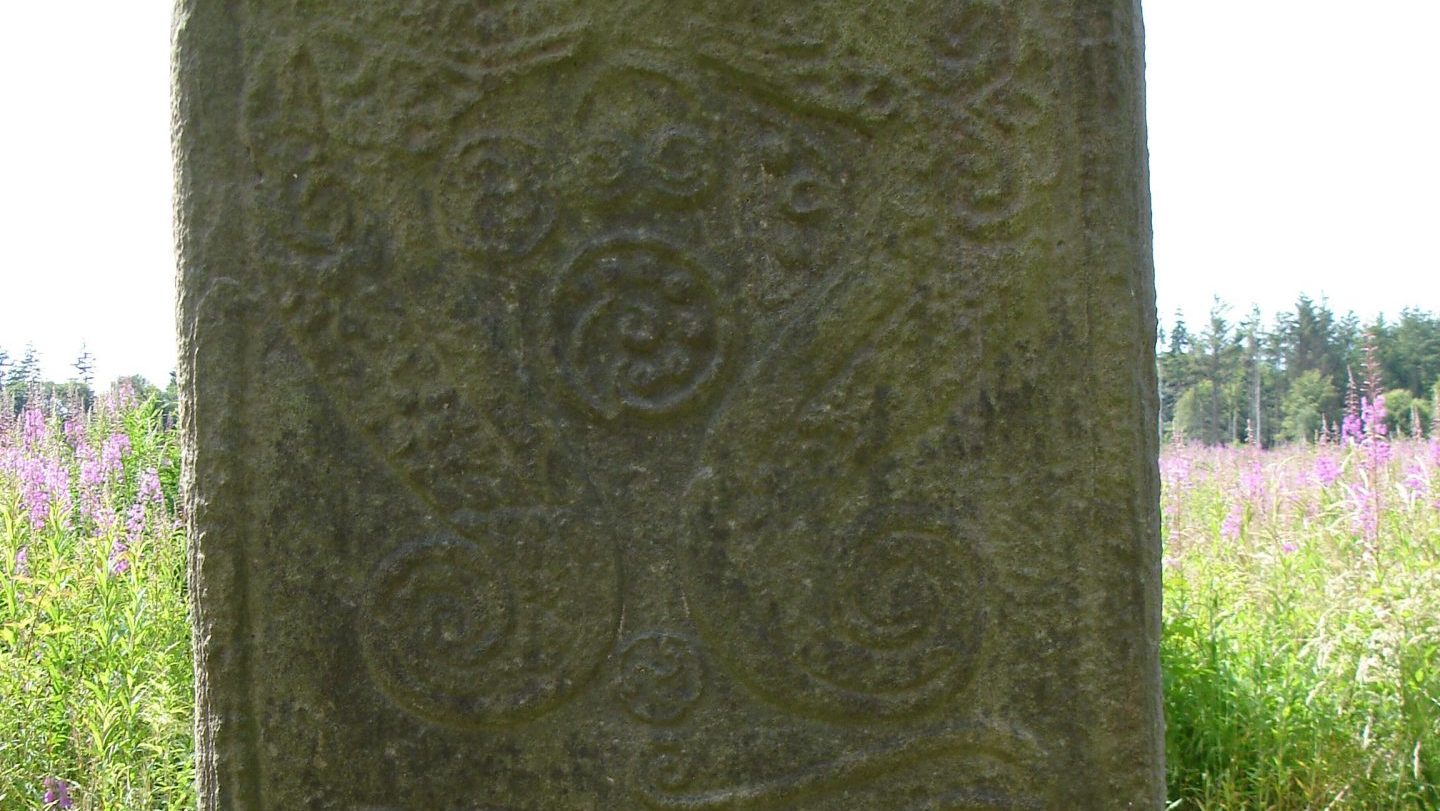Nine minutes. That’s it. Arguably the most terrifying cinematic performance
of all time, from a character still instantly recognisable a century on, took up barely nine minutes of screen time.
The repulsively cadaverous Count Orlok stalked into cinema history in FW Murnau’s 1922 silent horror classic Nosferatu thanks to a performance by Max Schreck bearing not the slightest trace of humanity. The German actor
managed to emanate pure evil from an all-but expressionless, skull-gaunt face, dark eyes devoid of soul, long fangs permanently exposed while fanning spindly, elongated claws as he crept through the night, throwing terrifying shadows on to the walls. There was even something repugnant about the high-collared, double-breasted coat he wore.
In a nation still traumatised from four years of war followed by the influenza
pandemic that swept the continent, the image of this pale, thin vampire reached out of the screen to take an icy grip on the hearts of an audience who could almost smell the stench of death.
Based on Bram Stoker’s Count Dracula, Schreck’s Orlok was about as far from the suave, caped aristocrat that has prevailed in popular culture from
Bela Lugosi through Christopher Lee to Claes Bang in the 2020 BBC adaptation as it is possible to be. Schreck’s Orlok was no charismatic seducer, he was a ruthless, repulsive predator.
Schreck’s interpretation of Stoker’s character arrived fully formed and utterly believable, a deathly presence dominating the film so completely it’s impossible to believe he was on screen for such a short time. Yet while those nine minutes were enough to grant the Berlin-born actor cinematic immortality, most people today struggle to name a single other film in which he appears. So elusive is Schreck, indeed, coupled with the fact his surname
translates as “terror”, strong rumours developed that Orlok was not played by an actor at all but was a genuine vampire (the 2000 film Shadow of the
Vampire, with Willem Dafoe as Orlok, brought these rumours to life).
For all that Shreck’s performance remains one of the greatest in the history of cinema, we’re actually fortunate to have those nine minutes at all. While the plot is blatantly that of Dracula, production company Prana-Film hoped that by changing the characters’ names they could avoid having to pay copyright fees to the Stoker estate. They hoped in vain. The author’s widow and literary executor, Florence Balcombe, was tipped off that Nosferatu was being screened in Germany and launched a legal action, demanding not only compensation but the destruction of every print in existence. It was enough to bankrupt Prana-Film and, it seemed, to have Schreck’s extraordinary performance erased from history altogether.
Fortunately for posterity, if not copyright law, the film reappeared in the late 1920s when a handful of surviving prints emerged in far-flung places, cut clumsily and with intertitles in different languages, but enough to save one of history’s great cinematic achievements from oblivion. By the summer of 1929 Nosferatu was being shown in America, “preyed upon by the cutters” according to the New York Post and featuring “choppy, ever-shifting scenes without the aid of good performances, except that of Max Schreck, title-roleist, who is as horrible, terrible and spooky as this ghastly, ghostly part requires”.
Despite a lengthy career on stage and on the screen, those nine minutes are just about all that survives of Schreck. For a man who spent most of his life
in front of audiences, if it hadn’t been for a few cans of film found at the back of cupboards in distant provincial cinemas it is possible he wouldn’t be
remembered at all, even in Germany.
He wrote no memoir and is rarely mentioned in those of contemporaries. Fleeting descriptions suggest he lived quietly with his wife, had no children,
was a loner, possessed a quirky sense of humour and came alive only on stage or on a film set.
Schreck had harboured ambitions to tread the boards from an early age, something his overbearing father dismissed out of hand. Schreck’s mother, meanwhile, secretly funded acting classes behind her husband’s back and when Schreck senior died – when Max was in his late teens – it freed him to enrol at a Berlin drama school. On graduation he joined a touring repertory company and spent two years on the road before moving on to the prestigious Munich Kammerspiele, where his performances included a role in Bertolt Brecht’s debut Drums in the Night. He became a favourite of the renowned Austrian director Max Reinhardt, who around 1920 introduced Schreck to FW Murnau just when the visionary director was planning his film version of Dracula.
Schreck had a handful of appearances in early German cinema to his name when he met Murnau, making his debut in the 1920 epic of 16th-century Spain, The Mayor of Zalamea, adapted from a play in which he had appeared, followed by Death is the Witness, a fantasy about an elixir of immortality.
Film suited Schreck, who had built a reputation as a man keen to embrace the grotesque in his roles, happy to conceal himself behind elaborate make-up, but he never revisited the horror genre even after his career-defining performance in Nosferatu. Lugosi and Lee returned to Dracula many times during their careers but Schreck’s Orlok was destined to be a one-off, a nine-minute masterclass in eerie, spine-chilling cinema.
There were roles as a blind man in the 1923 Expressionist masterpiece The Street, as the Doge in one of the first cinema adaptations of The Merchant
of Venice, and in a bizarre slapstick short scripted by Brecht, Mysteries of a
Barber’s Shop, but there was only one other collaboration with Murnau, the
forgettable 1926 comedy The Finances of the Grand Duke, that the director himself later disowned.
Schreck managed to juggle his screen appearances with stage work, earning
excellent reviews for a rare lead role in Moliere’s The Miser and appearing from 1933 at Erika Mann’s antifascist cabaret The Peppermill. On the night he died from a heart attack he had stood in for an indisposed actor as the Grand Inquisitor in Schiller’s Don Carlos.
Yet for all his positive notices, not to mention an ever-increasing posthumous reputation thanks to the immortality of Nosferatu, Schreck was soon all but forgotten, vanishing like Orlok in the morning sun. He was never a leading man on stage or screen, preferring the shadowy limelight of supporting roles, making his reviews, while positive, usually just passing references.
It took until the mid-2000s for a biographer, Stefan Eickhoff, to focus attention on a man permanently just out of reach, a wispy, chimerical figure
seemingly determined to sidestep posterity. Even he struggled to find much of the man behind the panstick, until he discovered a box of photographs hidden away in an archive.
Portraits. Self-portraits. Photographs Schreck had taken in costume for
almost every role he played, preserving characters in which he immersed and disguised himself for long forgotten plays and lost silent films, a catalogue of fleeting moments from a life made immortal in nine minutes that changed cinema forever.




